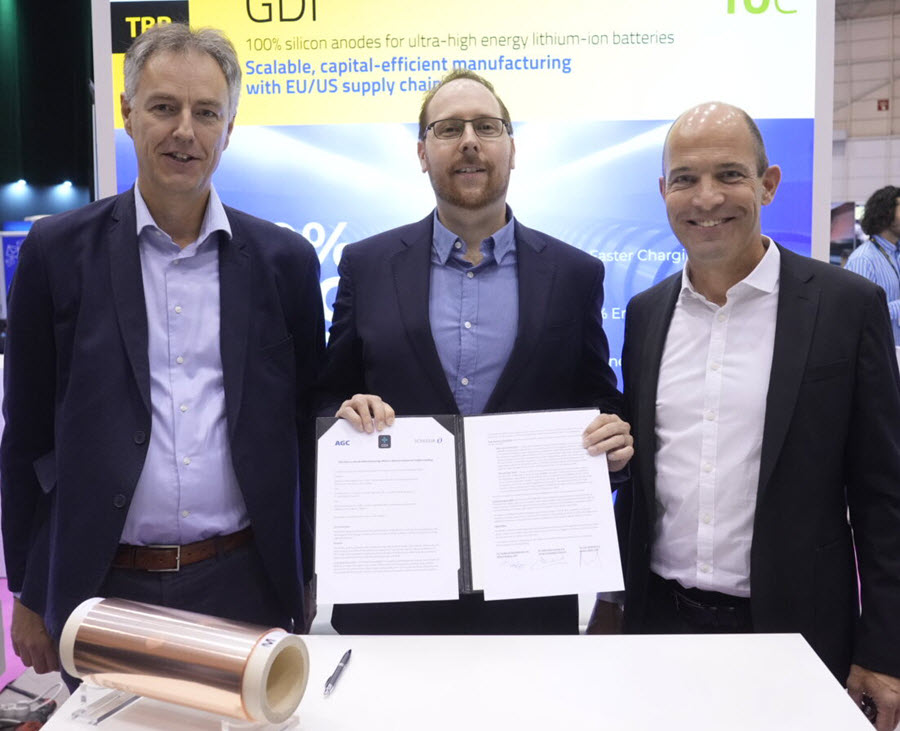Battery of the future: 30% more energy density - alliance between SCHLENK, GDI and AGC
14.10.2022
SCHLENK, GDI and AGC entered a strategic alliance to produce 100 MWh of anode capacity in 2024, with SCHLENK developing and manufacturing the copper anode foil. GDI, an American battery research company, brings the silicon anode technology and AGC, world leader in the production of flat glass for the construction and automotive industries, the silicon coating.
Electrification in numerous sectors is leading to increasing demand worldwide for a new generation of lithium-ion batteries that have higher energy density, can be charged faster and, most importantly, are safe. The growth potential in terms of energy density for legacy battery cells is limited, while novel technologies either still have technical difficulties to solve or are difficult to scale in production.
The key to increasing energy density lies in the anode - more precisely, in replacing graphite with pure silicon, which can store significantly more energy per the same mass. But the comparatively high expansion when charging silicon requires anode foils that are significantly stronger than conventional substrates. Otherwise, cycle stability is low because the copper foil quickly changes shape or even cracks. Our high-strength rolled copper foils ("High Tensile Alloy (HTA) copper foils") with up to 100% higher mechanical strength compared to electrodeposited copper foils (ED-Cu) solves this problem. Together with GDI, we are working on further optimization of our HTA copper foils for 100% coated silicon anodes.
This will make it possible to achieve higher energy densities and lifetimes for silicon-containing Li-ion batteries in the future - increasing the energy density of conventional cells by more than 30% while allowing well over 500 charging cycles: This means more energy at the same weight or savings in the weight and volume of the battery cell. In addition, previously required graphite is replaced by silicon, thus eliminating dependence on critical suppliers: the entire supply chain is covered by raw materials and technology partners from the EU and North America. At the same time, the replacement of graphite also has the advantage of reducing recycling problems, since graphite contaminates the battery, while silicon can be fully separated from the foil.
Over the next few years, AGC and Schlenk will work closely with GDI to provide technologies, raw materials, know-how and services necessary for the alliance to scale up production of GDI’s silicon anode on an industrial scale. The goal is to achieve anode production capacity of 100 MWh in 2024, 1 GWh in 2026 and 10 GWh in 2028.


